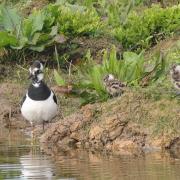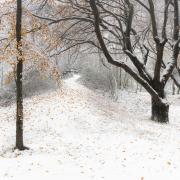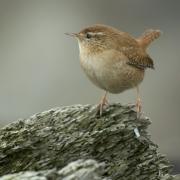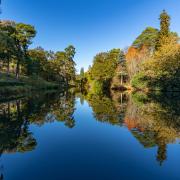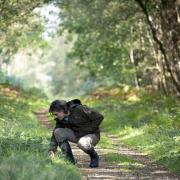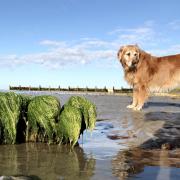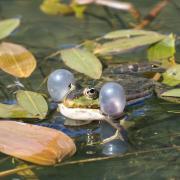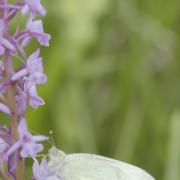What are the big challenges facing the Sussex countryside in the coming years and what will our landscape look like for the generations to come? Diane Millis reports
Rolling hills, chalk cliffs, bluebell-filled ancient woodlands – the stunning landscapes of Sussex are what attract many people to live here, and to stay. But these much-cherished open spaces face ever growing challenges and, for many, their future is far from secure.
A most obvious threat comes from the need to build more houses and infrastructure (roads, schools etc) as the number of people living in Sussex continues to grow. West Sussex’s population is predicted to reach 954,700 people by 2035 (a 19.1 per cent increase from 2010). Meanwhile, the population is East Sussex is projected to increase to 569,530 by 2027 up from 544,100 in mid-2015.
People are also living in smaller households. In East Sussex for example the number of dwellings is expected to increase by 10.5 per cent for a 5.5 per cent increase in population.
So where will all these new homes be built? A key factor influencing this is the amount of land that is protected by law from large-scale development, which in Sussex’s case is a lot.
Just over 52 per cent of West Sussex sits in a protected landscape – the South Downs National Park (SDNP) and two Areas of Outstanding Natural Beauty (AONBs) – and in East Sussex the figure is a little over 64 per cent. While this is a good thing in terms of offering a degree of protection for some of our most cherished landscapes, it does mean that areas beyond their boundaries will be particularly vulnerable to development.
James Humphrys, area director (Solent & South Downs) for the Environment Agency agrees that there is likely to be an impact in these areas. “There will be more housing, largely along the coastal belt. This will spoil some existing green spaces, but we will retain huge expanses of inland space, including the South Downs and the Weald north of it, almost all of which will remain pristine.”
But even in the National Park there will be some new housing in the coming years. There are already 112,000 people living in the park and the ‘Preferred Options’ draft of the Local Plan proposes that about 255 new homes be built in the park each year up to 2032. “Where these homes are located is an important question and the Local Plan will set out how we will meet these needs to minimise the impact on the National Park,” says the South Downs National Park Authority (SDNPA).
With more people comes more infrastructure. Gatwick Airport may yet get a new runway, leading to the loss of ancient woodland and open spaces. Plans to increase the capacity of the A27 are ongoing, and fracking sites remains a possibility across the Sussex Weald possibly impacting downland, meadowland, farmland and woodland.
Although not all infrastructure leads to permanent change or loss of landscape. E.ON’s wind turbine development off the Sussex coast requires a 14km cable connection to the National Grid that will run across the National Park. However, the cabling is being buried and the landscape restored once work has finished.
Climate change
Another key influence on our landscape will be climate change. To get an idea of the kind of changes we might see it’s worth taking a look at SDNPA’s Climate Change Adaptation Plan. It will leave you in no doubt that change could be pretty dramatic in Sussex including the loss of coastal land due to sea-level rise and the drying out of chalk streams and ponds due to drought conditions.
“There is no question that our landscapes will look different. The effects of climate change – hotter dryer summers and milder, wetter winters – will be evident, with new crops growing, possibly more vineyards and different tree species thriving. We might see birds such as bitterns booming and even storks nesting on rooftops along the Arun river,” says Trevor Beattie, chief executive of the SDNPA.
So much of Sussex is farmed land – around 85 per cent of land within the National Park is classified as agricultural – so the impact of climate change on farming could well lead to some really quite obvious changes in our countryside. Some landscapes are already starting to look more like those of rural France and Italy as vineyards start expanding across our hills and valleys. Other crops which are suited to warmer climates could also become more common, including sunflowers, apricots and citrus trees.
Some agricultural land is likely to become more salty as sea levels rise, so we could see crops such as samphire, or an increase in grazing sheep on new areas of saltmarsh.
We could also see hedgerows and trees return to some of our agricultural landscapes, as farmers realise their benefits in protecting crops and livestock from extreme weather and providing shade alongside our rivers and streams. New areas of woodland may also be created to help slow the flow of floodwaters, which are likely to become a greater problem.
Coastal changes
The Sussex coast is also certain to see significant changes as a result of climate change, says Trevor: “The Heritage Coast from Seaford Head to Eastbourne may experience the most dramatic changes.
“At some point in the next few decades the retreating cliffs will threaten Birling Gap visitor centre and the famous cottages at Cuckmere Haven.”
The No Regrets – Planning for Sea Level Rise and Climate Change report published by the Environment Agency provides more detail on the kind of changes we might see along the coast: “Some of the most significant impacts will include an increasing risk of flooding, erosion, storm damage and saltwater incursion to fresh groundwater and surface watercourses.” Eventually, hard defences will need to be raised and strengthened and “these could be intrusive, affecting views and access to the waterfront, and putting pressure on habitats, particularly intertidal areas between the sea and the coastal defences, leading to ‘coastal squeeze’”.
The report goes on to suggest that ultimately: “some existing buildings and infrastructure may need to be cleared from areas where the risk is increasing and replaced in new locations, for example on higher ground or further inland. This could disrupt existing communities and would create demand for new land for development elsewhere, potentially in the countryside or areas with landscape or green belt designations”.
James agrees that this is likely in Sussex: “Sea level rise and coastal processes will gradually cause changes along our seafronts where they are low lying. In some cases, difficult decisions will be needed.”
It’s happening already
Whether on the coast or inland, changes are already starting to be observed. The RSPB says climate change has already had a noticeable effect on its reserves in Sussex, for example. On its coastal reserves, increasing storms and high spring tides can destroy the annual breeding efforts of entire seabird colonies, so it has had to raise islands to allow sea birds to nest above unpredictable tides.
Meanwhile the RSPB has noted that woodlands are drying out and insects that need damp, boggy conditions no longer thrive: “This in turn has an impact on woodland birds, and is thought to be one of the reasons why species such as willow tits and lesser spotted woodpeckers have declined alarmingly in Sussex,” it says.
Our landscape constantly evolves in response to pressures and will continue to do so.
Looking ahead, political change in the form of Brexit may result in one of the biggest impacts on our environment since it is likely to lead to a new agri-environment funding system that may change the agricultural landscape.
More people living in Sussex will also undoubtedly increase pressure on the Sussex countryside, especially classic ‘honeypot’ sites such as Devil’s Dyke or the Seven Sisters Country Park.
Sussex residents will need its open spaces more than ever and will hopefully play a part in ensuring they are cared for into the future.
The positives: new landscapes
It’s not all about loss. We can look forward to the creation of new landscapes in the future:
• Medmerry, one of the RSPB’s newest nature reserves, near Pagham Harbour features new mudflats, tidal lagoons, saltmarsh, wildlife-friendly farmland, and dragonfly-rich ditches – all created as a result of an Environment Agency managed realignment scheme.
• Sussex’s rivers are also likely to change as they are allowed to become more natural.
• A major rewilding project at the Knepp Estate, owned by Sir Charles Burrell, leads the country in the creation of wild land.
• The award-winning Arun and Rother Connections (ARC) project led by the RSPB has created and enhanced over 50 hectares of habitat.








